Performance Analysis of Machine-Learning Approaches for Modeling the Charging/Discharging Profiles of Stationary Battery Systems with Non-Uniform Cell Aging
Abstract
:1. Introduction
Need for Predicting the Charging/DischargingPprofile
2. Literature Review
3. Models for Simulating Charging/Discharging Profiles
3.1. Lithium Iron Phosphate Batteries
3.2. Vanadium Redox Flow Batteries (VRB)
4. Machine-Learning (ML) Approaches
4.1. Model Based on an Artificial Neural Network with Feed-Forward Network and Back-Propagation as Training Algorithm
4.2. Model Based on Ensemble Learning (Least Square Boosting)
5. Simulation Results and Discussion
5.1. Lithium Iron Phosphate Batteries
5.2. Vanadium Redox Flow Batteries
5.3. Impact of Sample Size and Other Model Parameters
6. Materials and Methods
7. Conclusions
Acknowledgments
Author Contributions
Conflicts of Interest
Abbreviations
| SBS | Stationary Battery Systems |
| ML | Machine-Learning |
| PVs | Photo-Voltaics |
| SOC | State Of Charge |
| CC | Constant Current |
| CV | Constant Voltage |
| LFP | Lithium Iron Phosphate |
| VRB | Vanadium Redox Flow Batteries |
| ANN | Artificial Neural Network |
| EMS | Energy Management Systems |
Appendix A
References
- Stationary Storage Fraction of Advanced Battery Market. Available online: https://www.energymanagertoday.com/stationary-storage-fraction-of-advanced-battery-market-097419/ (accessed on 27 March 2017).
- Stationary Battery Energy Storage Speeds up the Energy Transition and Creates a $13.5 Billion Opportunity by 2023. Available online: http://www.yole.fr/Energy_Management_Battery.aspx#.WRE7X_mGNaQ (accessed on 15 May 2017).
- Education Bureau. 900 HDB Blocks, Eight Govt Sites to be Equipped with Solar Panels. Available online: https://www.edb.gov.sg/content/edb/en/news-and-events/news/2015-news/hdb-launches-first-tender-under-edb-ledprogramme-solarnova.html (accessed on 27 March 2017).
- Wong, R. 244 Solar Potential of HDB Blocks in Singapore. Energy Stud. Inst. Bull. Energy Trends Dev. 2011, 4, 6–7. [Google Scholar]
- Wu, J.; Botterud, A.; Mills, A.; Zhou, Z.; Hodge, B.M.; Heaney, M. Integrating solar PV (photovoltaics) in utility system operations: Analytical framework and Arizona case study. Energy 2015, 85, 1–9. [Google Scholar] [CrossRef]
- Jenkins, N. Distributed Generation; The Institution of Engineering and Technology: Herts, UK, 2010. [Google Scholar]
- Vegunta, S.C.; Twomey, P.; Randles, D. Impact of PV and Load Penetration on LV Network Voltages and Unbalance and Potential Solutions. In Proceedings of the IEEE 22nd International Conference and Exhibition on Electricity Distribution (CIRED 2013), Stockholm, Sweden, 10–13 June 2013; pp. 1–4. [Google Scholar]
- Adefarati, T.; Bansal, R. Integration of renewable distributed generators into the distribution system: A review. IET Renew. Power Gener. 2016, 10, 873–884. [Google Scholar] [CrossRef]
- Vithayasrichareon, P.; MacGill, I.F. Valuing large-scale solar photovoltaics in future electricity generation portfolios and its implications for energy and climate policies. IET Renew. Power Gener. 2016, 255, 79–87. [Google Scholar] [CrossRef]
- Xu, D.; Li, H.; Zhu, Y.; Shi, K.; Hu, C. High-surety Microgrid: Super Uninterruptable Power Supply with Multiple Renewable Energy Sources. Electr. Power Compon. Syst. 2015, 43, 839–853. [Google Scholar] [CrossRef]
- Barelli, L.; Desideri, U.; Ottaviano, A. Challenges in load balance due to renewable energy sources penetration: The possible role of energy storage technologies relative to the Italian case. Energy 2015, 93, 393–405. [Google Scholar] [CrossRef]
- Denholm, P.; Ela, E.; Kirby, B.; Milligan, M. The Role of Energy Storage with Renewable Electricity Generation. Available online: http://digitalscholarship.unlv.edu/renew_pubs/5 (accessed on 27 May 2017).
- Ahmad Hamidi, S.; Ionel, D.M.; Nasiri, A. Modeling and Management of Batteries and Ultracapacitors for Renewable Energy Support in Electric Power Systems—An Overview. Electr. Power Compon. Syst. 2015, 43, 1434–1452. [Google Scholar] [CrossRef]
- Fooladivanda, D.; Rosenberg, C.; Garg, S. Energy Storage and Regulation: An Analysis. IEEE Trans. Smart Grid 2016, 7, 1813–1823. [Google Scholar] [CrossRef]
- Energy Market Authority of Singapore and Singapore Power, Energy Storage Programme. Available online: https://www.ema.gov.sg/Energy_Storage_Programme.aspx (accessed on 27 March 2017).
- Canals Casals, L.; Amante García, B. Second-Life Batteries on a Gas Turbine Power Plant to Provide Area Regulation Services. Batteries 2017, 3, 10. [Google Scholar] [CrossRef]
- Badrinarayanan, R.; Zhao, J.; Tseng, K.; Skyllas-Kazacos, M. Extended dynamic model for ion diffusion in all-vanadium redox flow battery including the effects of temperature and bulk electrolyte transfer. J. Power Sour. 2014, 270, 576–586. [Google Scholar] [CrossRef]
- Stroe, D.I.; Knap, V.; Swierczynski, M.; Stan, A.; Teodorescu, R. Operation of Grid-Connected Lithium-Ion Battery Energy Storage System for Primary Frequency Regulation: A Battery Lifetime Perspective. IEEE Trans. Ind. Appl. 2016, 53, 430–438. [Google Scholar] [CrossRef]
- Stroe, D.I.; Swierczynski, M.; Stroe, A.I.; Knudsen Kær, S. Generalized Characterization Methodology for Performance Modelling of Lithium-Ion Batteries. Batteries 2016, 2, 37. [Google Scholar] [CrossRef]
- Wang, J.; Liu, P.; Hicks-Garner, J.; Sherman, E.; Soukiazian, S.; Verbrugge, M.; Tataria, H.; Musser, J.; Finamore, P. Cycle-life model for graphite-LiFePO4 cells. J. Power Sour. 2011, 196, 3942–3948. [Google Scholar] [CrossRef]
- Lam, L.; Bauer, P. Practical capacity fading model for Li-ion battery cells in electric vehicles. IEEE Trans. Power Electron. 2013, 28, 5910–5918. [Google Scholar] [CrossRef]
- Ramadass, P.; Haran, B.; White, R.; Popov, B.N. Mathematical modeling of the capacity fade of Li-ion cells. J. Power Sources 2003, 123, 230–240. [Google Scholar] [CrossRef]
- Badrinarayanan, R.; Zhao, J. Investigation of capacity decay due to ion diffusion in Vanadium Redox Flow Batteries. In Proceedings of the 2013 IEEE PES Asia-Pacific Power and Energy Engineering Conference (APPEEC), Kowloon, Hong Kong, 8–11 December 2013; pp. 1–5. [Google Scholar]
- Nandha, K.; Cheah, P.; Sivaneasan, B.; So, P.; Wang, D. Electric vehicle charging profile prediction for efficient energy management in buildings. In Proceedings of the IEEE Conference on Power & Energy (IPEC 2012), HO Chi Minh City, Vietnam, 12–14 December 2012; pp. 480–485. [Google Scholar]
- Panahi, D.; Deilami, S.; Masoum, M.A.; Islam, S.M. Forecasting plug-in electric vehicles load profile using artificial neural networks. In Proceedings of the IEEE 2015 Australasian Universities Power Engineering Conference (AUPEC), Wollongong, NSW, Australia, 27–30 September 2015; pp. 1–6. [Google Scholar]
- Devie, A.; Dubarry, M. Durability and Reliability of Electric Vehicle Batteries under Electric Utility Grid Operations. Part 1: Cell-to-Cell Variations and Preliminary Testing. Batteries 2016, 2, 28. [Google Scholar] [CrossRef]
- Gong, X.; Xiong, R.; Mi, C.C. A data-driven bias correction method based lithium-ion battery modeling approach for electric vehicles application. In Proceedings of the 2014 IEEE Transportation Electrification Conference and Expo (ITEC), Dearborn, MI, USA, 15–18 June 2014; pp. 1–6. [Google Scholar]
- Xiong, R.; Sun, F.; He, H.; Nguyen, T.D. A data-driven adaptive state of charge and power capability joint estimator of lithium-ion polymer battery used in electric vehicles. Energy 2013, 63, 295–308. [Google Scholar] [CrossRef]
- Xiong, R.; Sun, F.; Chen, Z.; He, H. A data-driven multi-scale extended Kalman filtering based parameter and state estimation approach of lithium-ion polymer battery in electric vehicles. Appl. Energy 2014, 113, 463–476. [Google Scholar] [CrossRef]
- Kandasamy, N.K.; Kandasamy, K.; Tseng, K.J. Loss-of-Life Investigation of EV Batteries used as Smart Energy Storage for commercial building based Solar Photovoltaic Systems. IET Electr. Syst. Trans 2017, in press. [Google Scholar]


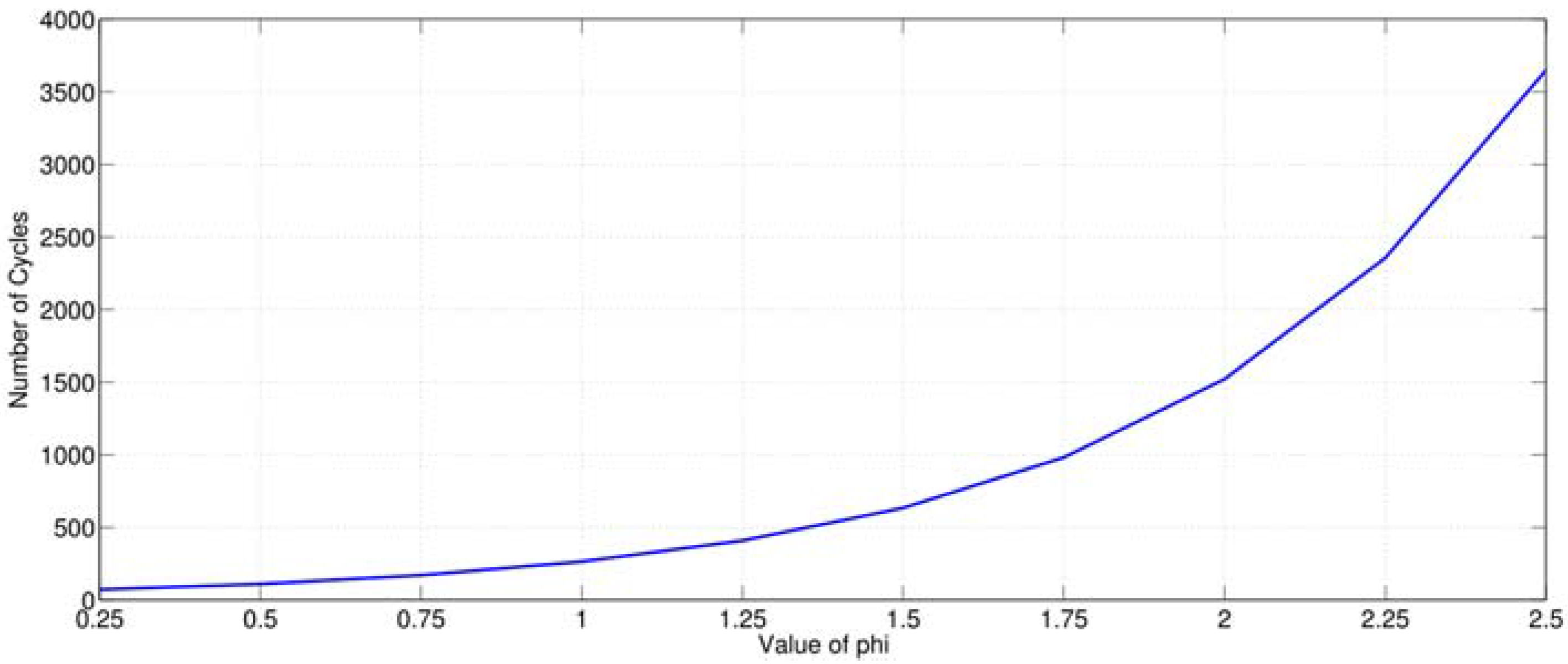
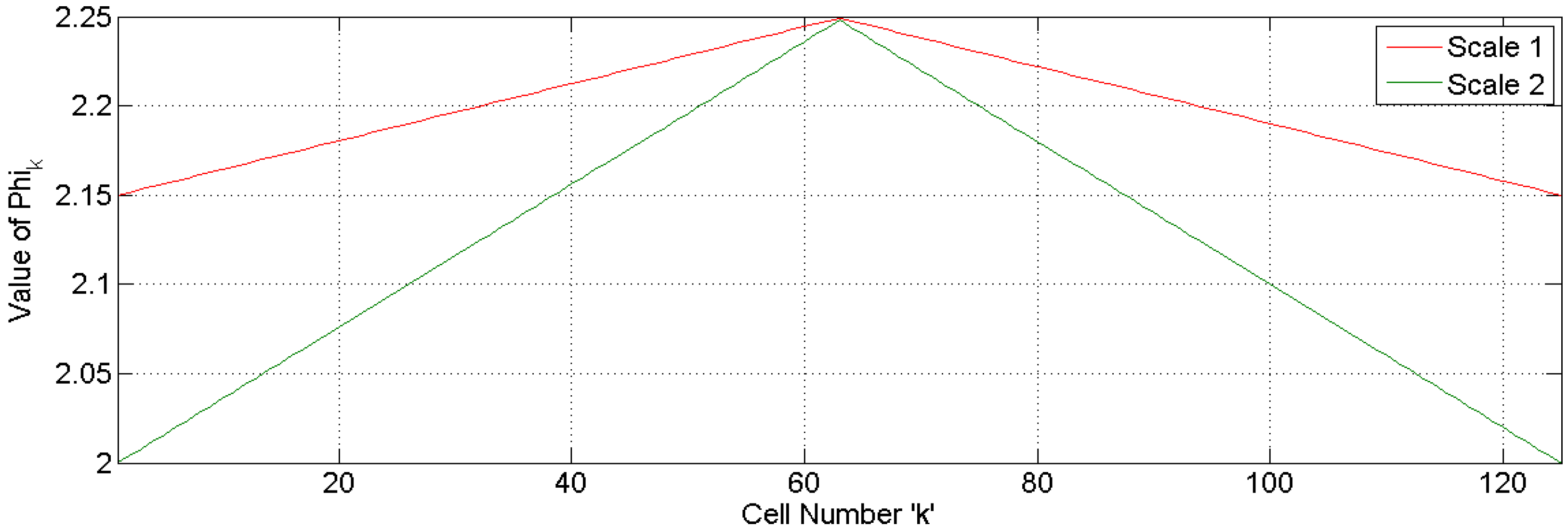
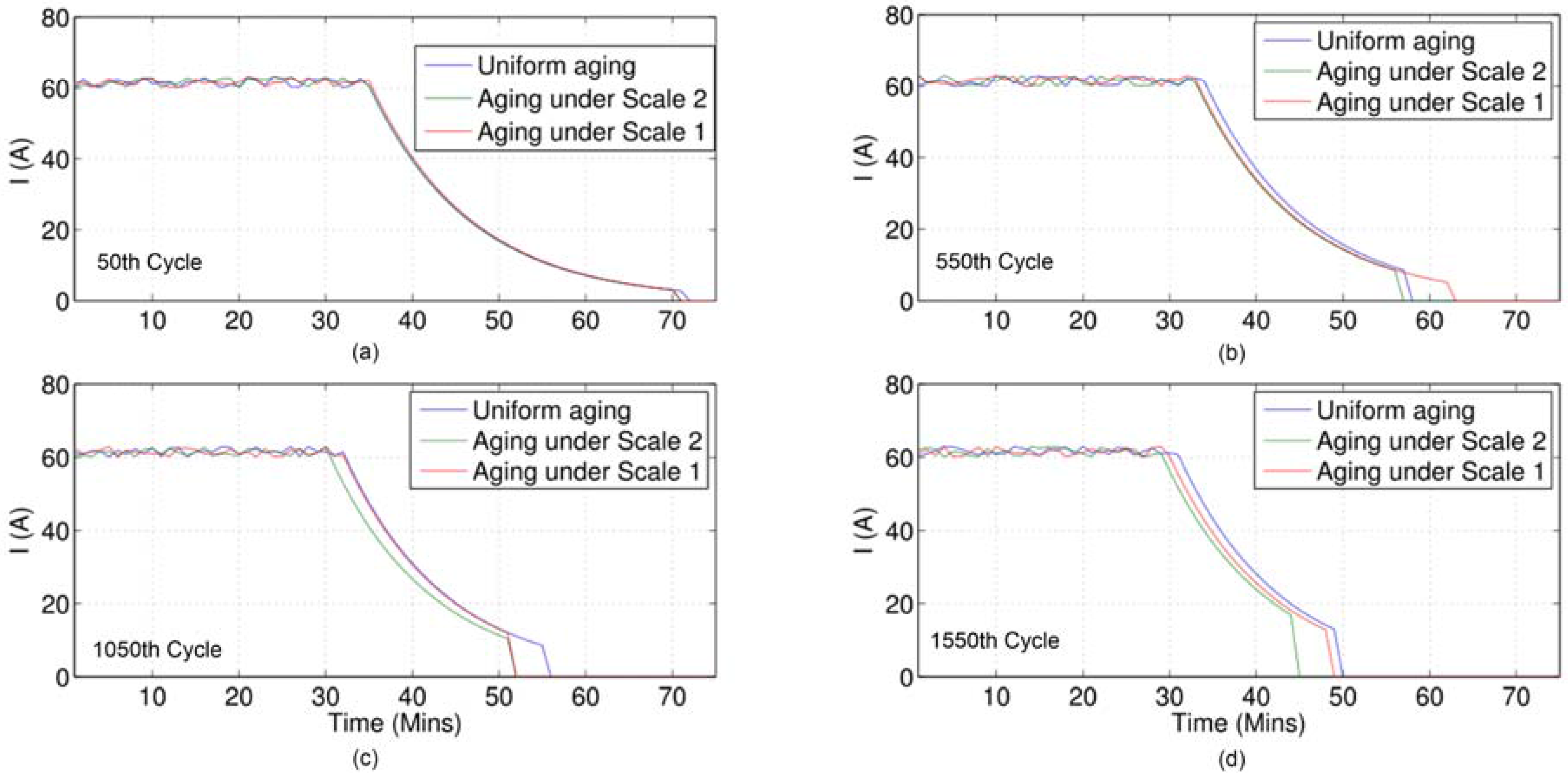
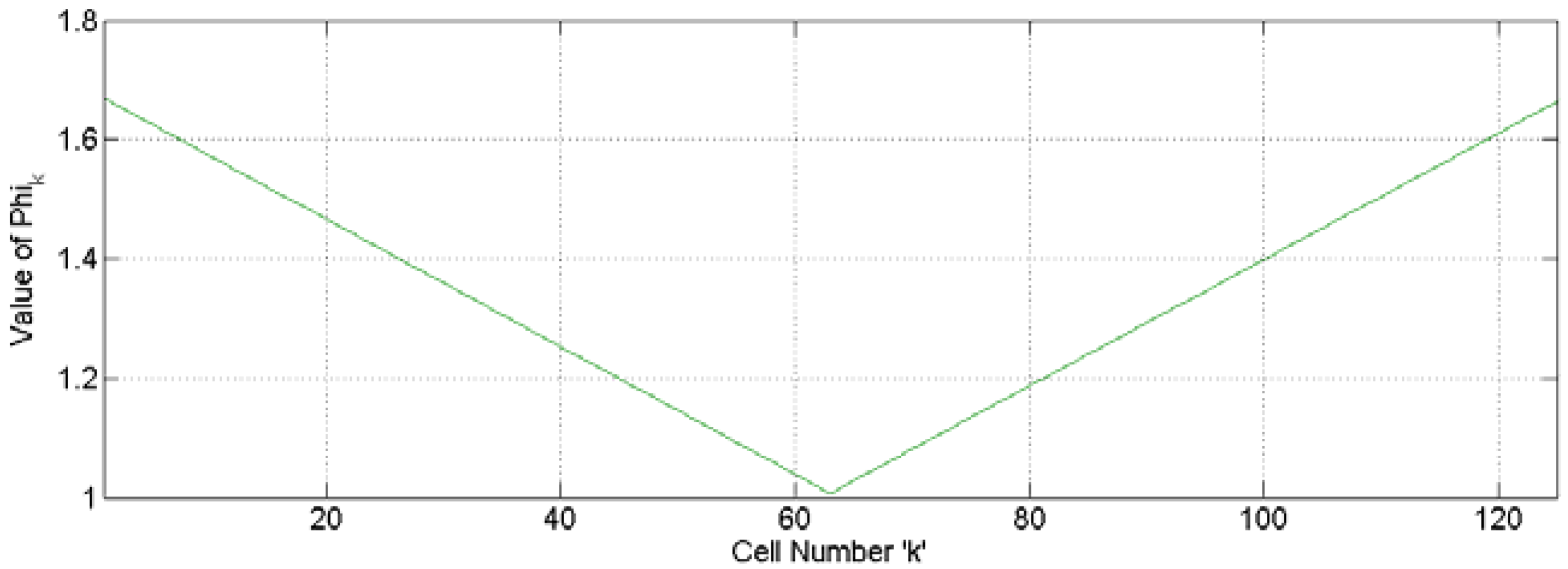



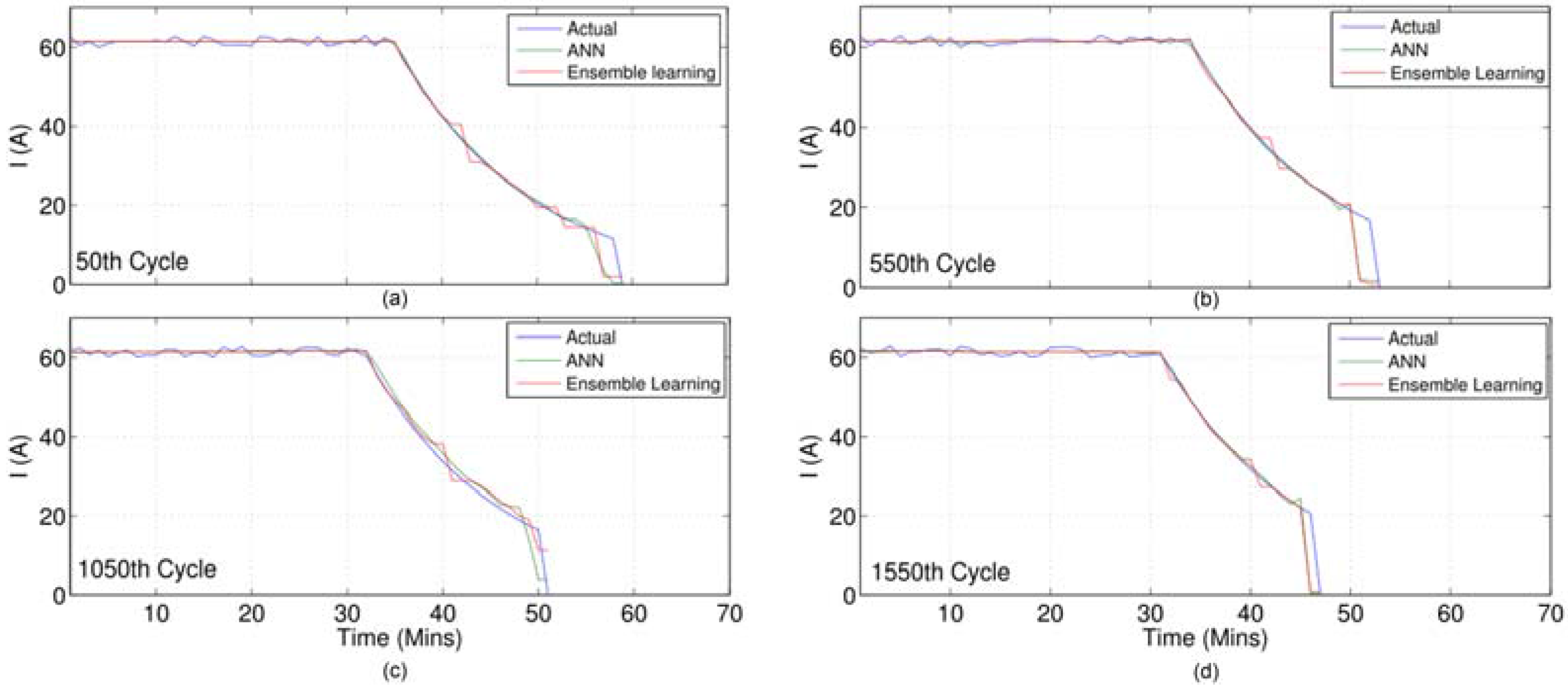

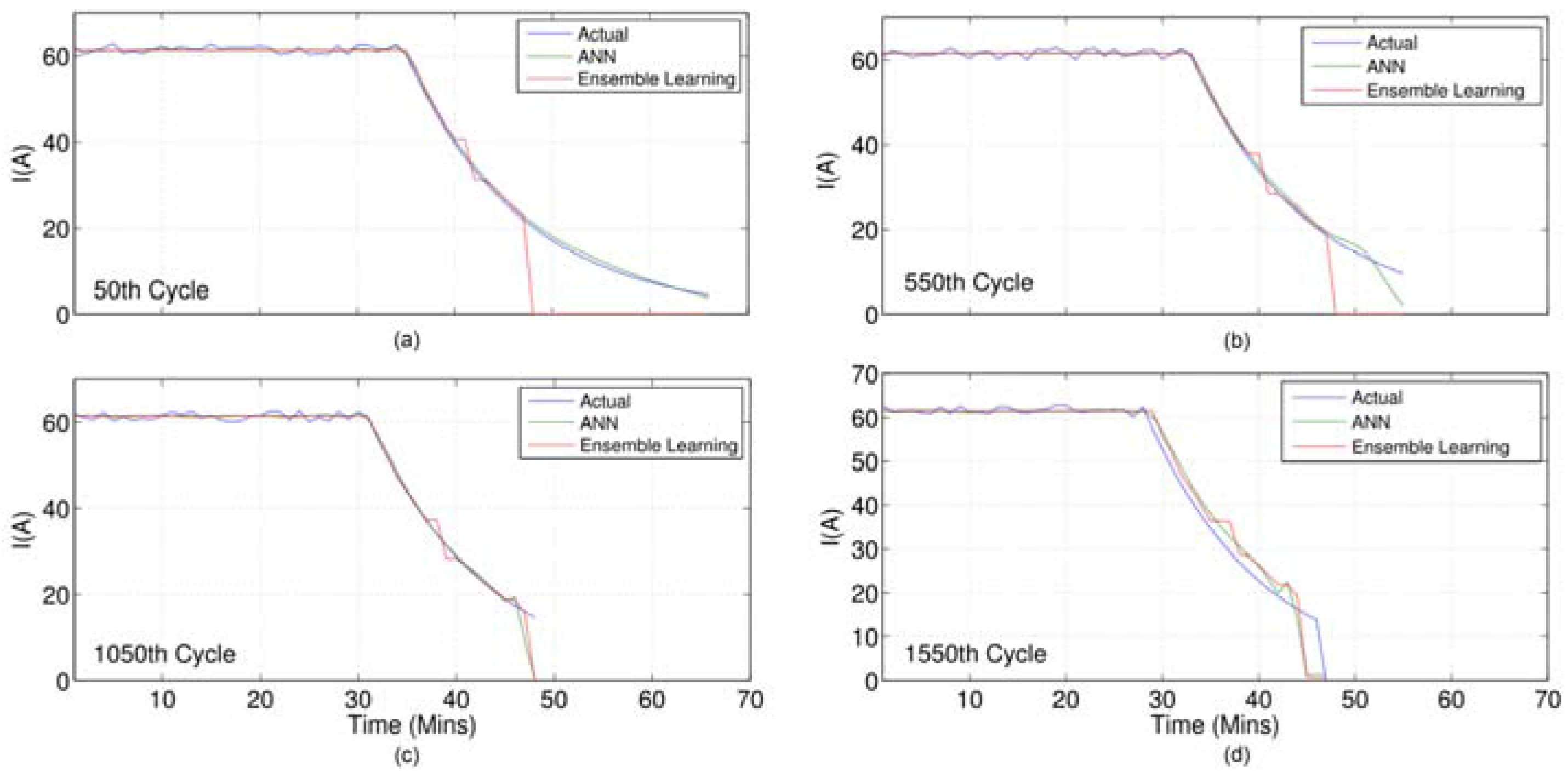
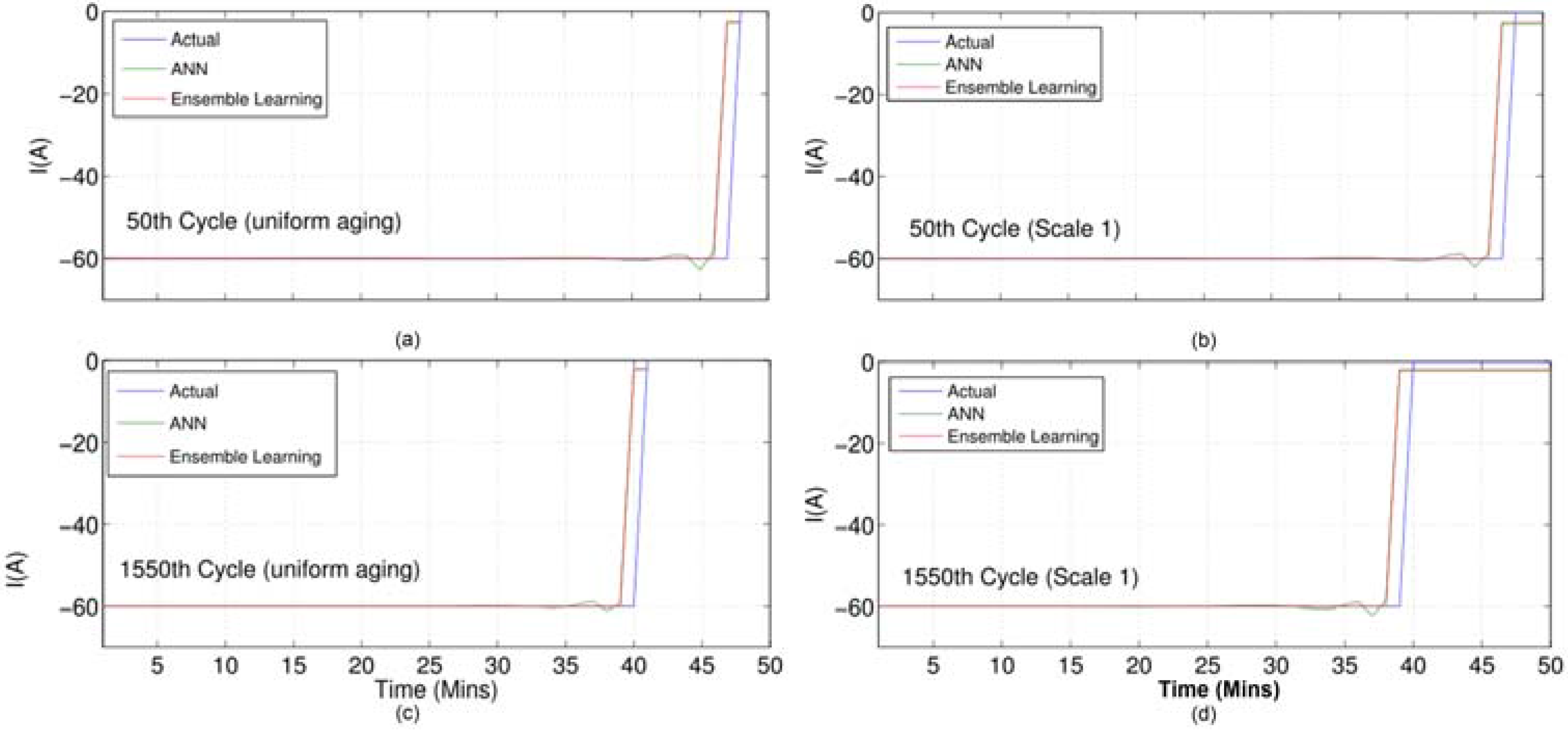
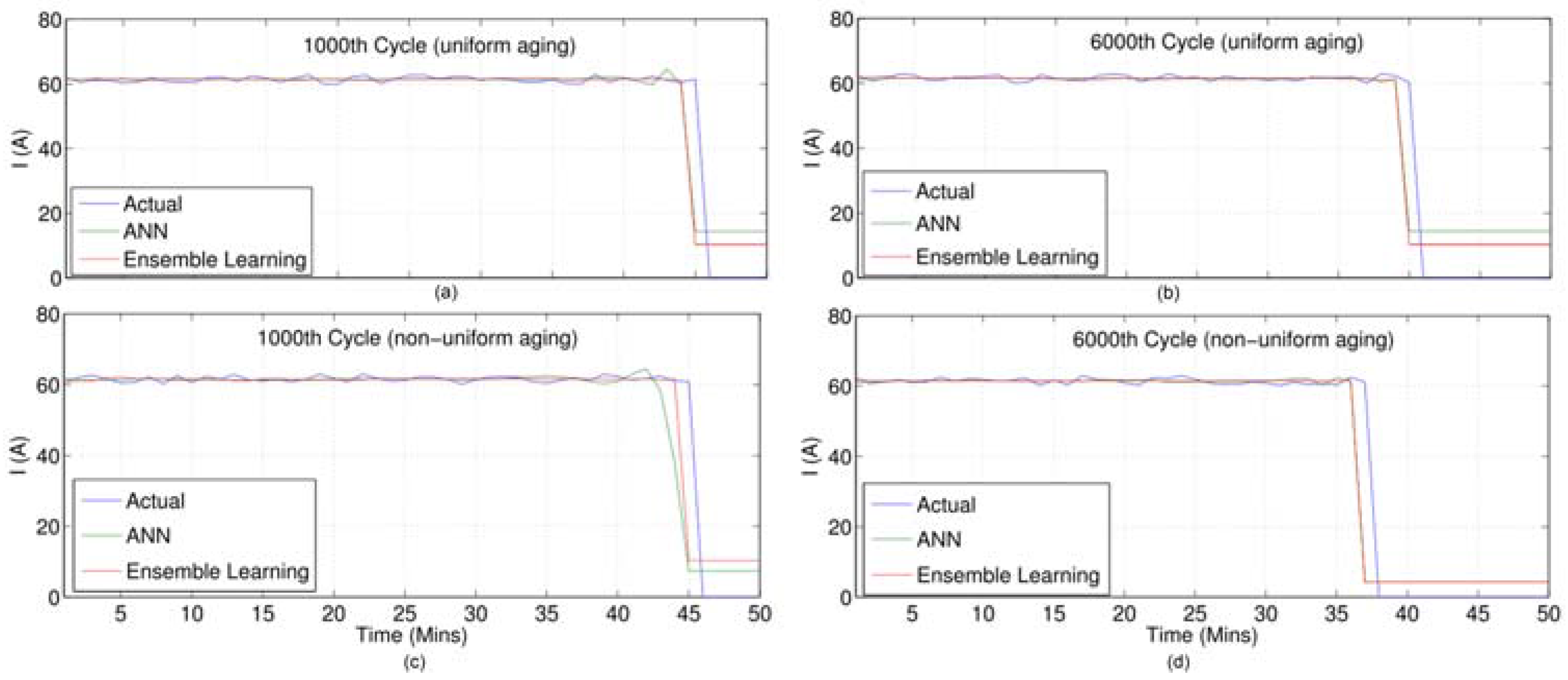
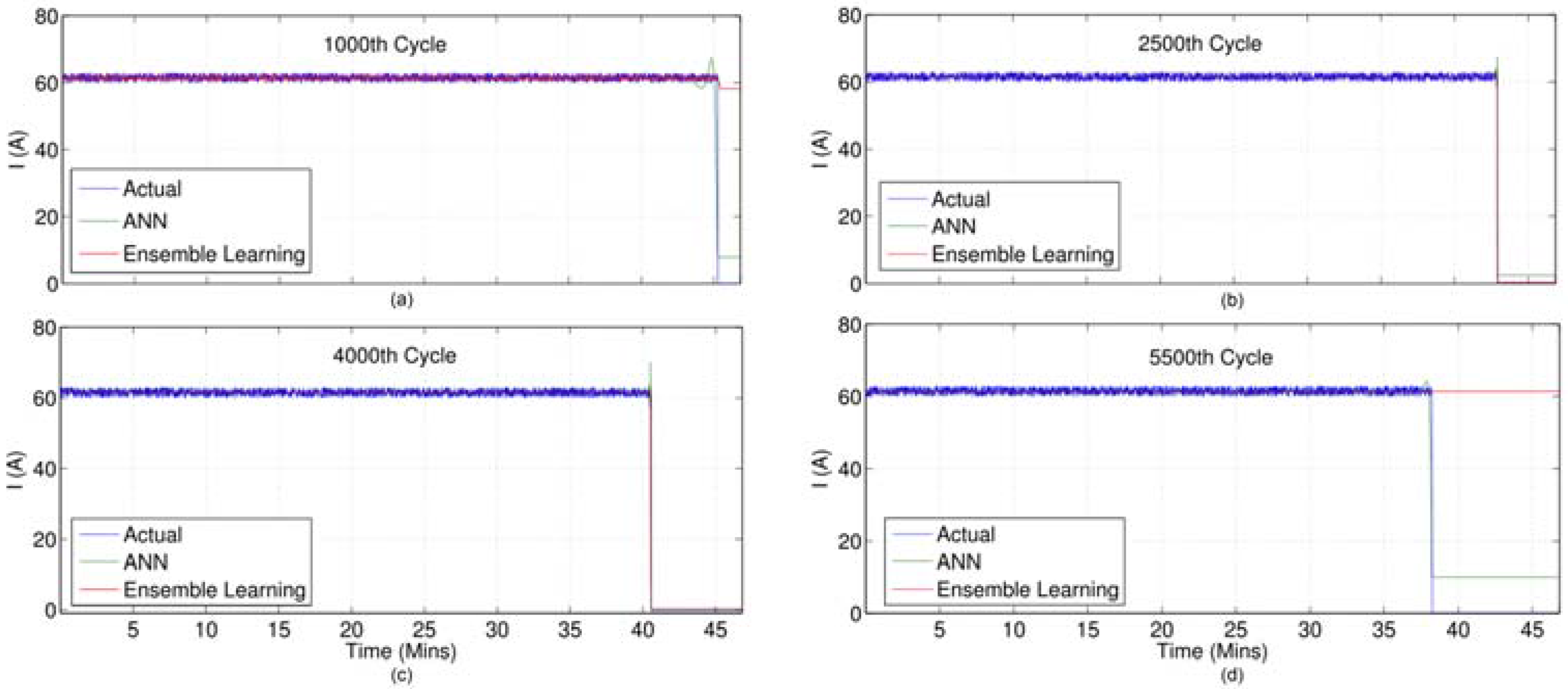

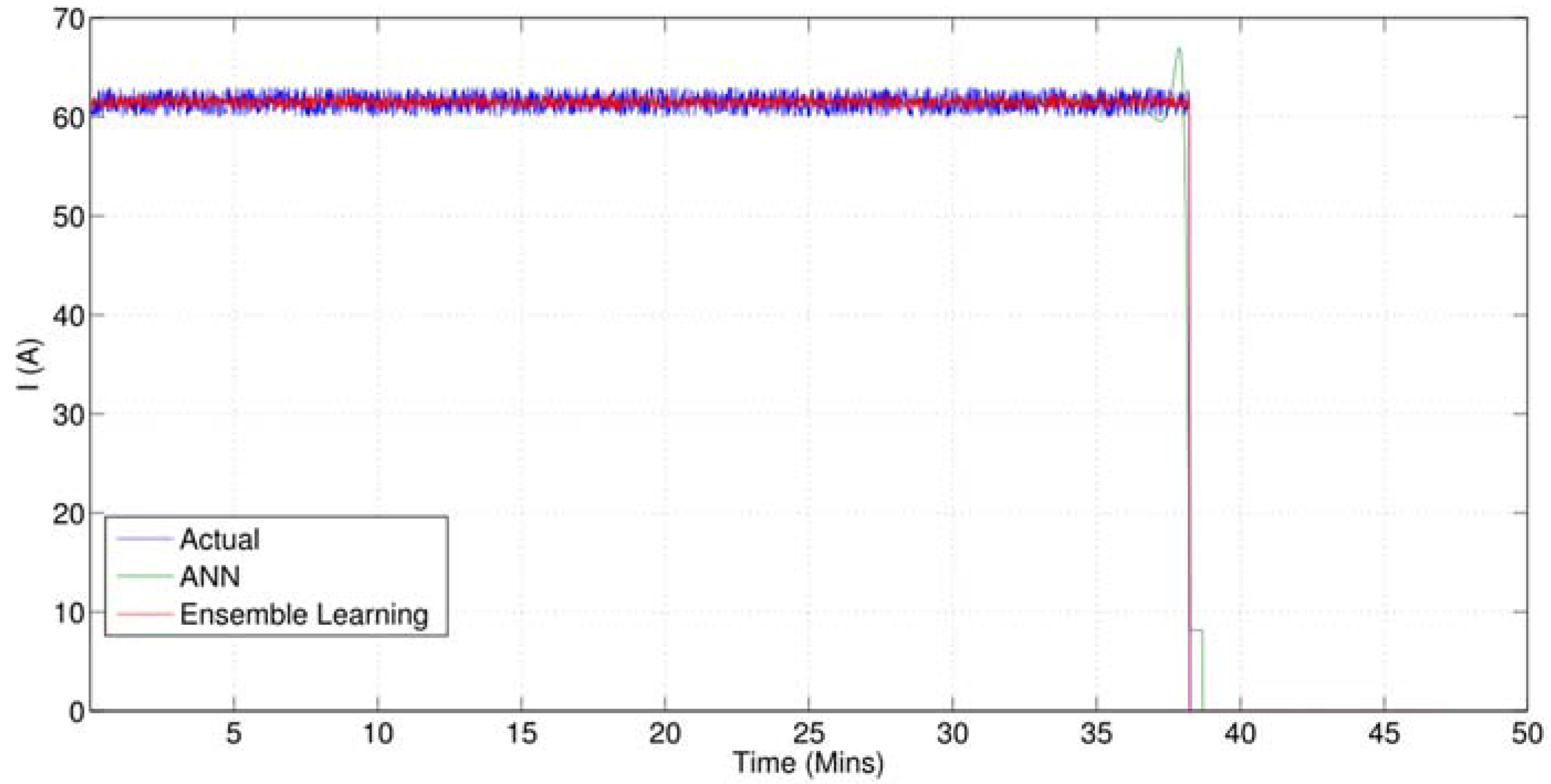
| Model-SP-LFP60AHA(A) | |
|---|---|
| Nominal Capacity | 60 Ah, 192 Wh |
| Nominal Voltage | 3.2 V |
| Standard Current | 0.3 C, 18 A |
| Max CC | 3 C, 180 A |
| Self-Discharge | ≤3% |
© 2017 by the authors. Licensee MDPI, Basel, Switzerland. This article is an open access article distributed under the terms and conditions of the Creative Commons Attribution (CC BY) license (http://creativecommons.org/licenses/by/4.0/).
Share and Cite
Kandasamy, N.K.; Badrinarayanan, R.; Kanamarlapudi, V.R.K.; Tseng, K.J.; Soong, B.-H. Performance Analysis of Machine-Learning Approaches for Modeling the Charging/Discharging Profiles of Stationary Battery Systems with Non-Uniform Cell Aging. Batteries 2017, 3, 18. https://doi.org/10.3390/batteries3020018
Kandasamy NK, Badrinarayanan R, Kanamarlapudi VRK, Tseng KJ, Soong B-H. Performance Analysis of Machine-Learning Approaches for Modeling the Charging/Discharging Profiles of Stationary Battery Systems with Non-Uniform Cell Aging. Batteries. 2017; 3(2):18. https://doi.org/10.3390/batteries3020018
Chicago/Turabian StyleKandasamy, Nandha Kumar, Rajagopalan Badrinarayanan, Venkata Ravi Kishore Kanamarlapudi, King Jet Tseng, and Boon-Hee Soong. 2017. "Performance Analysis of Machine-Learning Approaches for Modeling the Charging/Discharging Profiles of Stationary Battery Systems with Non-Uniform Cell Aging" Batteries 3, no. 2: 18. https://doi.org/10.3390/batteries3020018






